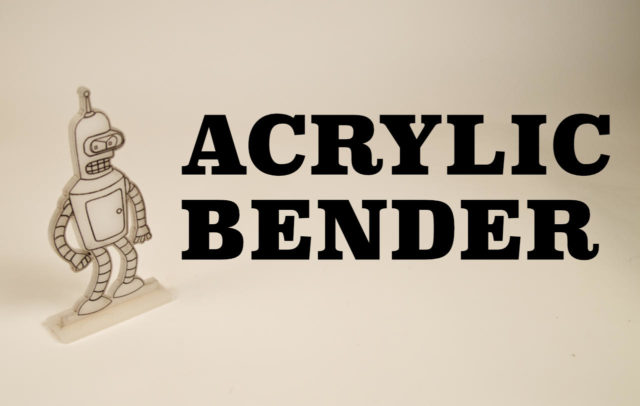
I was talking to Caleb the other day and I mentioned how my favorite thing happening was the pairing of 3D printing nerds and people sewing masks collaborating because the sewers want bias tape makers and you can easily make them on a 3D printer. I swear I heard someone I know cry out “Finally! Having six different 3D printers will pay off!”
But seriously, Caleb wrote it up for MAKE, 3D Print This Simple Tool Now, To Help Local Sewers Make More Masks for Covid-19, and yes, it is a useful tool. I’ve probably given away over 50 of them in the last week.
Like others, I had started by printing visors for face shields, but I then jumped into the efforts we’re spearheading at Milwaukee Makerspace to produce a high volume of visors by milling HDPE on CNC machines. It’s faster, and the material choice is perfect for cleaning, disinfecting, and reuse, which may not be the case for 3D printed visors. (But, hey, if a 3D printer is all you’ve got, print away!)

So what is “bias tape” anyway? I will admit, I am not much of a maker when it comes to sewing, but these photos from a friend help illustrate how you use this thing. It’s for making the straps of a face mask that has ties on it. I guess elastic is running out, and some hospitals don’t want elastic, so you make your own bias tape with this thing.

Cut your fabric to size, pin it to your ironing board, run it through the device, and iron it down… then you sew it. (I think I got that right.) Also note, I did not design this. Someone mentioned they were printing this 4cm model so I just offered to help by printing more. I then cajoled a few local friends with 3D printers to also start printing them… we’ve made a lot of them now.

Last week when I was printing them like mad I was doing one at a time so I could grab it off the print bed, toss it in the box on my front porch and always have the box well stocked, as people were coming all day long to get them. Typically you might fill your print bed with 9 or 12 or 16 and hit print and come back 12 hours later, but I wanted these out fast, when there was demand, so one at a time made sense. (Plus, I’m working from home and a break every 35 minutes to walk to the printer helped me get my steps in!) I asked a friend to print some and he said “Yeah, I’ll have a bunch in 6 hours” but we had people wanting to pick one up ASAP, so…
While the full bed does make sense for overnight or if you’re away from the printer, I eventually switched to “one at a time sequence printing” where my printer will print 4, but not all at once, it will print one, then move to an empty part of the bed, print another, etc. This allows me to grab one off the bed as soon as it’s done, and the printer keeps going without me having to hit print again. This is great because even though I monitor the printer, I might be on a long call or doing something else where printing one at a time isn’t ideal.
The two groups I’ve been giving these to are The Masked Sewists for SE Wisconsin and Wisconsin Face Mask Warriors. Let me tell you, these sewing people have quite the maker network happening! They’ve got drop off points, tips & tricks for making, and they are sharing and encouraging each other. My favorite post was one that said “Finally! I can use all the fabric I bought for imaginary projects.” I think many makers can identify with that statement.

The other things I printed last week were these PAPR connector parts. I got a message last week from a guy who said they were working on this Open Source PAPR (Powered Air-Purifying Respirator) project, and wanted prints to make molds for resin casting the parts. I printed four sets so he could send them out to four teams to work on. I haven’t heard back on their progress yet but I wish them well.
Oh, one last story! I got a message on Facebook from a lady who wanted one of the bias tape makers and I said “Come get one! They are on my porch!” and she said “I’m in Florida, can you ship one?” So I asked where in Florida, and she said Orlando… so I got her in touch with my pals at MakerFX and they printed one for her. Maker Network Activated!


























